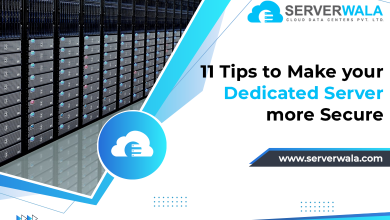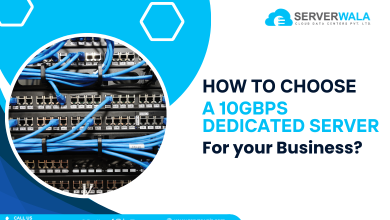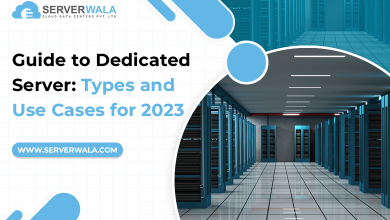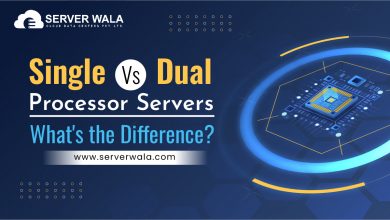Which Hardware Does a Dedicated Server Have?
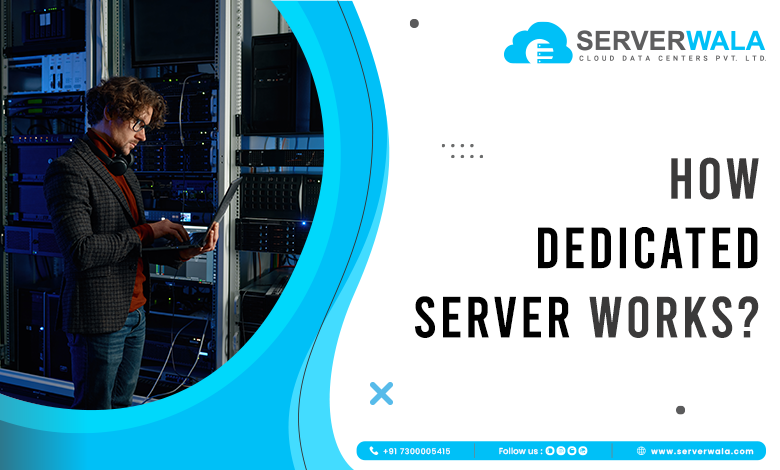
Introduction
In the always-advancing arena of web hosting, dedicated servers stand as stalwarts of functioning and reliability. These robust machines offer exclusive resources to a single user or entity, ensuring optimal performance for resource-intensive applications. To comprehend the powerhouse that is a dedicated server, it’s crucial to delve into the intricacies of its hardware components.
Brief about Dedicated Server
A dedicated server is a kind of hosting solution where a whole physical web server is devoted to a single user or entity. Unlike shared hosting, which divides resources among multiple users, a dedicated server grants exclusive access to all its computing power, memory, and storage. This exclusivity translates to unparalleled control, flexibility, and performance, making dedicated servers the preferred choice for businesses and individuals with demanding computational needs.
How Dedicated Server Works?
The dedicated server operates as a remote powerhouse, orchestrating a symphony of tasks and seamlessly delivering content to users globally. When a user initiates a request for information or services from a website hosted on a dedicated server, the server takes charge independently. Leveraging its abundant resources, the server swiftly processes the request, ensuring a prompt and reliable response.
This autonomy becomes particularly crucial during periods of heightened traffic or resource-intensive operations, where the dedicated server’s exclusive access to resources shines. This independent processing capability not only guarantees consistent performance but also shields the server from potential performance bottlenecks that often plague shared hosting environments, affirming the dedicated server’s status as a pinnacle of reliability in the ever-expanding digital landscape.
Here is the Hardware a Dedicated Server Has:
1- RAM
At the heart of a dedicated server lies its RAM, a critical component responsible for temporarily storing and quickly accessing data that the server is actively using. The amount of RAM directly influences the server’s ability to handle concurrent processes and efficiently manage applications. For robust performance, dedicated servers often boast substantial amounts of random access memory, ranging from some gigabytes to many terabytes, depending on the specific requirements.
Furthermore, the type of RAM matters, with DDR4 and DDR5 being common choices, offering improved speed and efficiency over their predecessors. The RAM’s speed, measured in MHz, plays a crucial role in data transfer rates, impacting the server’s responsiveness.
Additionally, ECC (Error-Correcting Code) RAM is favored in dedicated servers for its error-recognition & correction abilities, assuring data integrity & stability of the system. The judicious selection of RAM specifications aligns with the server’s intended use, whether it be for high-performance computing, virtualization, or other resource-intensive applications.
2- CPUs and cores
Central Processing Units (CPUs) are the brain of a dedicated server, responsible for implementing instructions & doing computations. Dedicated servers come equipped with high-performance CPUs, and the number of cores determines the server’s multitasking capabilities. More cores translate to better parallel processing, permitting the web server to administer several tasks at the same time. This is specifically vital for applications that demand significant computational power.
In addition to core count, the clock speed of the CPU, measured in GHz, influences the speed at which tasks are executed. Modern dedicated servers often feature multi-socket configurations, accommodating multiple CPUs for enhanced processing power. Hyper-Threading Technology, found in some CPUs, further optimizes multitasking capabilities by allowing each core to execute two threads simultaneously.
Advanced technologies like Intel’s Turbo Boost and AMD’s Precision Boost dynamically adjust clock speeds, optimizing performance based on the server’s workload. The choice of CPU architecture, whether x86, ARM, or others, depends on specific application requirements and compatibility.
3- Storage
Storage is a pivotal aspect of a dedicated server, dictating how much data it can store and retrieve. These servers often feature multiple hard drives or solid-state drives configured in RAID arrays to enhance data redundancy and retrieval speeds. Storage capacity varies widely, catering to diverse needs, from a few terabytes for standard applications to multiple petabytes for enterprise-level data storage.
Dedicated servers commonly employ SSDs for their superior read & write speeds, considerably intensifying overall system responsiveness. NVMe (Non-Volatile Memory Express) SSDs, with their direct connection to the PCIe bus, provide even faster data access, ideal for demanding applications that require rapid data retrieval.
The RAID configuration ensures data protection and continuous operation by distributing data across multiple drives. RAID levels, such as RAID 0, RAID 1, and RAID 5, offer varying Integrations of functioning, redundancy, & capacity. Storage solutions also extend to network-attached storage (NAS) or storage area network (SAN) setups, enabling scalable & centralized data storage.
4- Bandwidth
Bandwidth refers to the volume of data that a dedicated server can transfer over the network within a specified period. Adequate bandwidth is vital for handling incoming and outgoing data traffic, ensuring seamless user experiences and swift content delivery. Dedicated servers typically offer high-bandwidth connections to accommodate the demands of bandwidth-intensive applications, such as streaming, large file transfers, and data-intensive websites.
The choice of network infrastructure, including 1 Gbps, 10 Gbps, or higher Ethernet connections, directly influences the server’s data transfer capabilities. Some dedicated servers also leverage multiple network interfaces or bonded connections to aggregate bandwidth, optimizing network performance.
Content delivery networks (CDNs) may complement dedicated server bandwidth, enhancing global content distribution by replicating and caching content across multiple servers strategically located worldwide. DDoS (Distributed Denial of Service) protection services are often integrated to safeguard against malicious attempts to overwhelm the server with traffic, ensuring uninterrupted service.
5- GPU
While not a standard component, some dedicated servers may include Graphics Processing Units (GPUs) for enhanced processing power, particularly in tasks requiring complex calculations, parallel processing, or graphics rendering. GPUs contribute to accelerating certain types of computations, making them valuable additions for scientific simulations, machine learning, and graphic-intensive applications.
GPUs are available in various configurations, including consumer-grade and professional-grade models. NVIDIA Tesla and AMD Radeon Instinct series GPUs cater specifically to data center and server deployments, offering optimized performance and reliability.
GPUs in dedicated servers extend beyond traditional graphics rendering, finding applications in artificial intelligence (AI) and machine learning workloads. Frameworks such as NVIDIA CUDA and OpenCL facilitate GPU acceleration, significantly reducing processing times for data analysis, rendering, and simulations.
Also Read: Guide to Dedicated Server: Types and Use Cases for 2024
Conclusion
In web hosting, a dedicated server’s hardware forms the bedrock of its capabilities. The combination of ample RAM, powerful CPUs, expansive storage, high bandwidth, and optional GPU support positions dedicated servers as versatile workhorses capable of meeting diverse computational demands. Choosing the right dedicated server hardware ensures a seamless and high-performance hosting experience, making it a preferred choice for businesses and individuals aiming for uncompromised reliability and control in their online endeavors.

